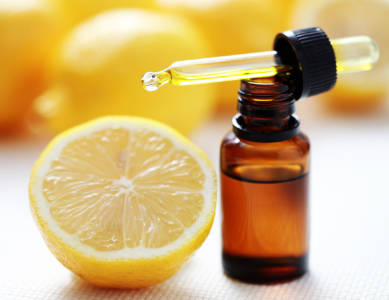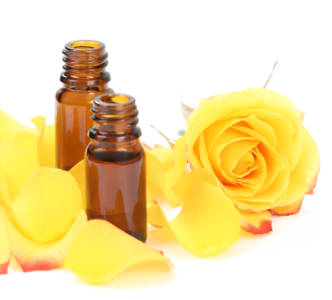Extracts and Flavoring Oils Category

almond extract
This is made with almond oil and alcohol, and it's especially good in cookies and cakes. It's potent, so recipes usually call for no more than a teaspoon. Bitter almond extract is even stronger.
Learn moreanise extract
This tastes like licorice, and it's typically used to flavor cakes and cookies.
Learn moreanise oil
This imparts a licorice flavor to foods. Look for it near the spices in large supermarkets or in candy supply stores or pharmacies. You can store flavoring oils indefinitely in a cool, dark place.
Learn morebrandy extract
People use this to impart the flavor of brandy without the alcohol. Though brandy extracts are made with alcohol, such a small amount is needed in any recipe that the end product is virtually non-alcoholic.
Learn morecinnamon oil
This is sometimes used as a home remedy for toothaches, but cooks also use it to make hard candies and cinnamon apples.
Learn moreextracts
Extracts are concentrated flavoring agents. Some, like beef extract or wine essence, are made by reducing a liquid until it's a syrup. Others, like vanilla and peppermint extract, are made by dissolving a spice or flavoring oil in alcohol. Store extracts in a cool, dark place, and keep the lids screwed on tight. Properly stored, they'll keep for a long time, though the flavor will gradually lose potency.
Learn moreflavoring oils
These are highly concentrated essences of a wide variety of flavors, like cinnamon, anise, bitter almonds, and peppermint. They're often used to make hard candies and lip glosses, but they also make excellent substitutes for extracts--just use much less than the recipe calls for. Look for flavoring oils near the spices in large supermarkets or in candy supply stores or pharmacies. You can store them indefinitely in a cool, dark place.
Learn morekewra essence
This concentrated oil is made from male pandanus (screwpine) flowers, and it's used to flavor meats, desserts, and beverages in India and Southeast Asia. Look for tiny bottles of it in Indian and Asian markets. Don't confuse it with kewra water, which isn't nearly as potent
Learn morekewra water
This is an extract that's distilled from pandanus flowers, and used to flavor meats, drinks, and desserts in India and Southeast Asia. Some brands of kewra water are artificially flavored, so check the label.
Learn morelemon extract
This is often used in cakes, muffins, frostings, and pies. To make your own: Chop the zest from one or two lemons and put it into a small, clean jar until the jar is 1/3 full. Fill the jar with vodka, making sure that the zest is completely immersed. Seal it with a tight-fitting lid, allow the mixture to steep for two weeks, then strain out the zest using cheesecloth or a coffee filter. The result won't be as strong as commercial extracts.
Learn moreliquid smoke
This is a very potent seasoning that imparts a smoky flavor to meat, fish, and vegetarian mock meat products. A little goes a long way.
Learn moremastic
Mastic is derived from the hardened resin of trees; usually the the mastic tree. When the resin dries it looks like a small drop or "tear". When chewed it has tastes like pine. Mastic is used to for medicinal purposes, as chewing gum and to flavor food and wine.
Learn moreoil of bitter almonds
This is a very potent flavoring oil that's sold in small bottles and measured by the drop. Natural bitter almond oil isn't available in the United States since it's slightly toxic, but you can buy a synthetic version in bakers' supply shops or through mail order companies. Don't confuse this with the mildly flavored almond oil that's used in savory dishes.
Learn moreoil of lemon
This comes from lemon peels, and it's so concentrated that it's usually measured by the drop. Don't confuse it with lemon extract, which is diluted with alcohol and not nearly as concentrated as the oil. Recipes for hard candies usually call for a flavoring oil rather than an extract, since extracts tend to evaporate when heated.
Learn moreoil of orange
This comes from orange peels, and is so concentrated that it's usually measured by the drop. Don't confuse it with orange extract, which is diluted with alcohol and not nearly as concentrated as the oil. Recipes for hard candies usually call for a flavoring oil rather than an extract, since extracts tend to evaporate when heated.
Learn moreorange flower water
This is distilled from bitter orange blossoms, and it's used to flavor drinks, salads, and desserts. Look for it in Middle Eastern markets and specialty shops.
Learn morepeppermint oil
All you need is a drop or two for most recipes. Recipes for hard candies usually call for a flavoring oil rather than an extract, since extracts tend to evaporate when heated.
Learn morerose essence
This is similar to rose water, only it's far more concentrated. Indian cooks use it to flavor beverages and desserts.
Learn morerose syrup
This is used in the Middle East, India, Persia, and Southeast Asia to flavor desserts and beverages.
Learn morerose water
This is distilled from rose petals, and used in the Middle East, North Africa, and India to flavor desserts. Don't confuse this with rose essence, which is more concentrated.
Learn morerum extract
This is used to impart the flavor of rum without the alcohol. Though rum extracts are made with alcohol, such a small amount is needed in any recipe that the end product is virtually non-alcoholic. If you're a stickler, though, non-alcoholic rum extracts are also available, as are Passover rum extracts.
Learn moretruffle oil
This is a secret ingredient of many chefs, who use it to impart the earthy taste and aroma of truffles to their dishes. There are two varieties: the mild white truffle oil and the more pungent black truffle oil. Both are delicious sprinkled on pasta, but the black truffle oil is better suited to meats and heavy sauces while the white is the best choice for fish dishes, cream sauces, and vinaigrettes. If you're cooking with it, add it at the very end to prevent the flavor from dissipating. Truffle oil is expensive, but a little goes a long way.
Learn moretucupi
Tucapi is a yellow sauce extracted from manioc roots. It is used with rice and various meats like duck, fish and shrimp.
Learn morevanilla essence
This has two meanings. In Britain, vanilla essence is the same as America's imitation vanilla extract. Elsewhere, vanilla essence may mean a highly concentrated and pricey form of pure vanilla extract.
Learn morevanilla extract
Vanilla extract is made from vanilla beans that have been steeped in alcohol. It's widely used throughout the world to flavor desserts, like baked goods, ice cream, beverages, and custards, but some chefs use it as a secret ingredient in savory dishes as well. Pure extracts made with vanilla from the Bourbon Islands, which include Madagascar, is especially well-regarded. Mexican vanilla extract is also excellent, and even more potent, but it's sometimes adulterated with a dangerous food additive that's banned by the FDA. Look for vanilla extract among the baking supplies in your supermarket.
Learn morevanilla extract, imitation
This inexpensive substitute for pure vanilla extract is made with synthetic vanillin and other flavorings. Many brands are quite good, since chemists know how to produce an exact copy of natural vanillin, the dominant flavor in vanilla. The problem is that vanillin isn't the only flavor component in vanilla, so even the best imitation vanilla extracts aren't quite as full-flavored and complex as the real deal. Food gurus are always saying that cooks should never, ever use imitation vanilla extract, but at least one taste test has shown that many people prefer a high quality imitation vanilla extract to pure extract. Avoid imitation vanilla from Mexico--it may contain a toxic food additive.
Learn morevanilla powder
This alcohol-free powder is made from vanilla beans that have been dried and pulverized. Unlike vanilla extract, it doesn't evaporate when heated, so it's well suited to making custards and other cooked desserts. It's also good for making dry mixes and for sprinkling onto drinks and dishes. Some brands have sweeteners added. Look for it in larger supermarkets and specialty shops.
Learn morewine essence
This is wine that's been reduced to a syrup, which de-alcoholizes it and allows it to be stored for a longer period of time. Professional chefs sometimes make this to use up half-empty bottles of wine that would otherwise go bad in a few days. The syrup can be used in sauces or other dishes that call for wine.
Learn more




























































































































































































































































































































































